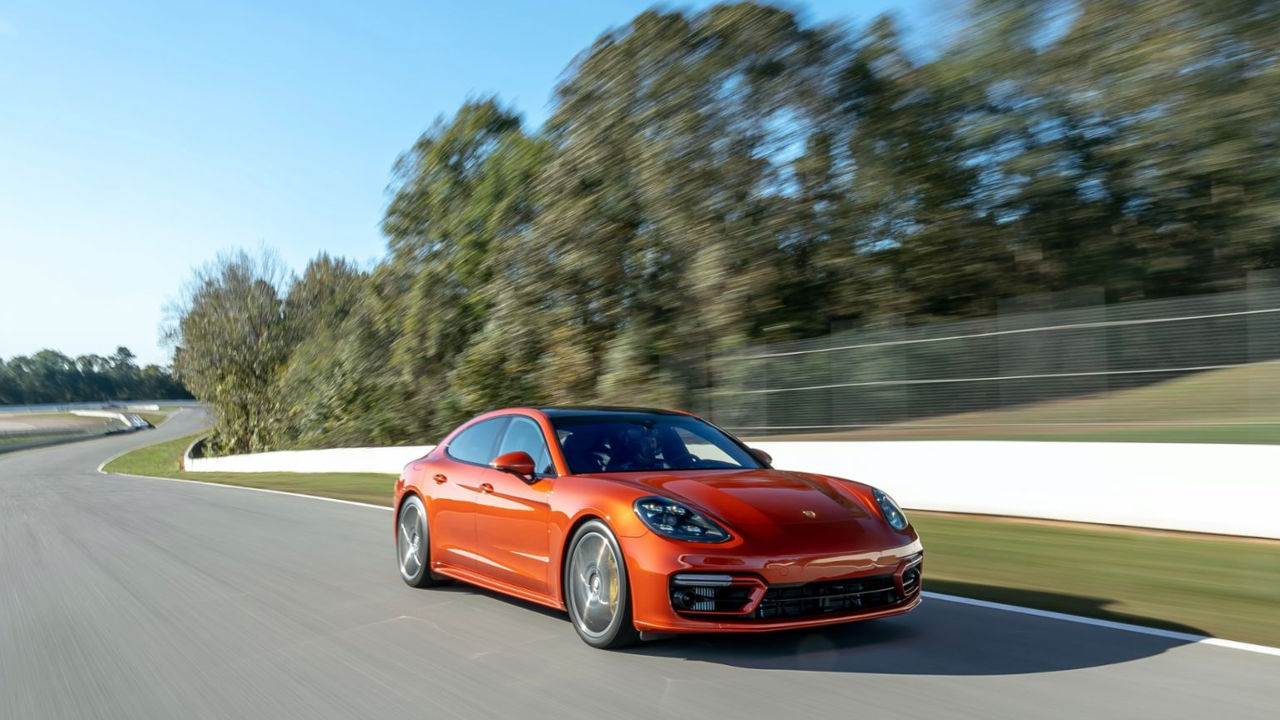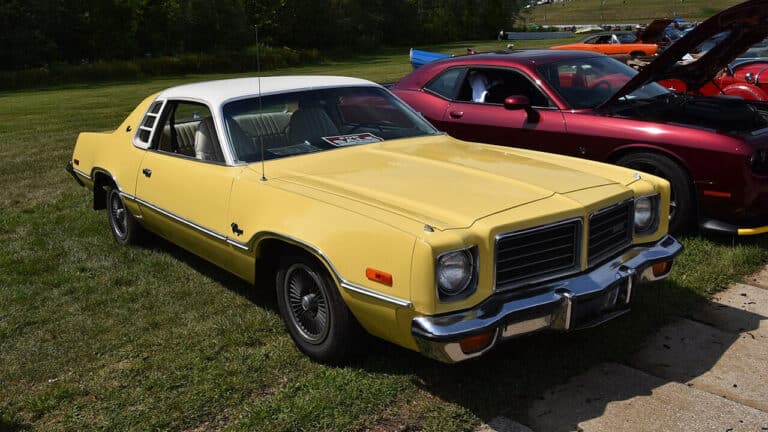13 Cars on Everyone’s Fantasy Wishlist

A fantasy is fiction. It sounds harsh, but that’s the crux of the matter. They’re unrealistic expectations that primarily begin and end in our imaginations. That’s why you shouldn’t give up on your bucket lists of ultra-expensive cars as fantasies.
You might win the Powerball tomorrow and suddenly, you can finally buy your dream bespoke Rolls-Royce Boat Tail, the latest Bugatti, or your very own built-to-order Rezvani Hercules 6X6 (oh, how this author loves this extreme high-performance offroader).
Don’t stop dreaming there because there are holy grails like the Ferrari 250 GTO and near-mythical creatures like the Bugatti La Voiture Noire that don’t care how much money you’ve got.You can’t have them because they’re not for sale.
Aye, the 250 GTO pops up for sale now and then, but you need a war chest of around $100 million to stand a chance at the bidding war. Don’t stop fantasizing, though. That’s how we challenge the boundaries of reality. Hitch a ride with us into the world of dream cars.
Ferrari 250 GTO

Everyone knows this one as the holy grail of classic cars. Just 36 were made, and it’s been 60 years since the last of them rolled off the Maranello factory in 1964. Actually, the original Series 1 production run dried up after just 33 units. Ferrari built three more Series II 250 GTOs in 1964, bringing the total tally to 36.
The Ill Commendatore himself had to approve who gets to buy one. It didn’t matter if you were a Powerball winner. The car was not meant to be stashed in a climate-controlled garage. It was a racing car meant for skilled drivers who would not tarnish its racing reputation.
After all, the “GTO” in its name is short for “Gran Turismo Omologato,” signaling its homologation for the GT class. It won the International Championship for GT Manufacturers in 1962, 1963, and 1964, as well as numerous class victories in the 24 Hours of Le Mans, Targa Florio, and other prestigious racing events.
Bugatti La Voiture Noire

We described it in the intro as a near-mythical creature because the La Voiture Noire is a one-off hypercar we were teased with in 2019. There were rumors that soccer star Cristiano Ronaldo was the mystery buyer, but the “The Black Car” was later determined to have been handed over to Ferdinand Piëch, a scion of the Porsche/Piëch clan and Austria’s wealthiest family, at the princely sum of around $18 million (€16.7 million, including taxes).
Ronaldo or Porsche, the La Voiture Noire is a fantasy car we all wished was ours — a symbol of exclusivity and engineering excellence. There’ll never be another La Voiture Noire. So, it’s our fantasy number two.
Koenigsegg Jesko Absolut

Here is a hypercar designed primarily to break speed records, not just so you can buy it for millions of dollars. You’d need millions of dollars to get one of the few examples produced, anyway.
Even so, you’re late on the draw, as all of them are already spoken for at $3 million apiece. Koenigsegg promised to limit the production numbers to 125, including the track-focused Jesko and Jesko Absolut models. How many of each variant will be made depends on customer orders, as each Jesko is built to order, allowing extensive customizations capable of making each of the 125 unique.
McLaren F1

As a member of the holy trinity of hypercars, the McLaren FI is one of the greatest of all time. It became the world’s fastest production car when it breached 240 mph top speed in 1998. It took a long time before another car, the Bugatti Veyron, broke that record over a decade later. Only 64 of the 106 units produced were street-legal and could fetch an excess of $20 million at auction.
Of the remaining 42 units, seven were prototypes you don’t even want to dream of owning. Like the other members of the Trinity, the F1 set a new standard in supercar design and engineering.
The designer, Gordon Murray, emphasized a lightweight, driver-centric approach, but we’re not sure if that’s why the engine bay is lined with gold foil. At least, we know the material should help with cooling due to its heat-reflective properties.
Lamborghini Veneno

The Veneno was born to celebrate Lambo’s 50th anniversary in 2013. Three Veneno coupes were arrayed in the Italian national colors of green, red, and white. Another gray-colored Veneno sits at the Italian marque’s Museum of Technologies.
That leaves just nine Veneno roadsters out of the total tally of 14 available to the public, making it one of the world’s rarest desirable cars ever made. Each of those lucky enough to snag these pieces of Italian automotive history reportedly paid approximately €3 million ($3.215 million), although the roadster fetched over $8 million at auction in 2019.
Porsche 911 GT1

There have never been and there may never be another GT1. Produced from 1991 to 1996, the GT1 is a road car because it has to race. Only 25 road-going versions were made because Porsche had no choice but to meet homologation rules.
The car was born for showdowns at FIA’s GT Championship events and the 24H Le Mans. It was the overall victor at the 1998 Le Mans, marking Porsche’s 16th overall victory in its Le Mans history. The road versions were thus dubbed the Strassenversion (Straßenversion).
For most of us, the closest we’ll ever get to this car is the wallpaper on our screens. It deviated from Porsche’s traditional rear-engine layout in favor of a mid-engine configuration for optimum weight distribution.
Aston Martin Valkyrie

Aston Martin used this car to stretch and push the boundaries of hypercar design, technology, and engineering. Its numbers are limited to 150 road-legal versions, along with 25 track-only variants called the AMR Pro. The Valkyrie is the fruit of a high-powered marriage between Aston Martin, Red Bull Racing, and the legendary F1 designer Adrian Newey.
As a result, the Valkyrie is a rolling specimen of F1 technologies, from its advanced aerodynamics to the lightweight construction to the high-revving naturally aspirated V12 engine. The Cosworth-developed 6.5-liter unit unleashes nearly 1,200-hp and a glorious 11,100 rpm.
Mercedes-Benz 300 SLR Uhlenhaut Coupe

How much are you willing to pay for a unicorn — a million dollars? Two million? A mystery private collector unloaded approximately $145 million (€135 million) in 2022 for the right to own this 69-year-old piece of German technology named after Mercedes-Benz chief engineer Rudolph Uhlenhaut.
It was one of the two road-legal, hardtop versions of the highly successful 300 SLR “W196” Formula 1 race car. It would later serve as Uhlenhaut’s personal car, which he famously drove about 137 miles from Stuttgart to Munich in just over an hour. Even if you have $145 million to spend, you might wait a lifetime for this car to rear its German head at auctions again.
Pagani Huayra BC

Pagani built just 20 copies of the BC Huayra to honor a departed dear friend and one of the brand’s earliest customers, Benny Caiola. The BC was significantly lighter than the standard Huayra, thanks to the extensive use of carbon fiber and other lightweight materials.
It was highly customizable and featured the AMG-developed 6.0-liter twin-turbocharged V12 engine, producing 750-hp and 738 lb-ft of torque. With a 7-speed automated manual transmission (AMT) routing power to the rear wheels, the BC could exceed a top speed of 230 mph and race to 60 mph in 2.8 seconds. Produced from 2016 to 2020, prospective customers needed a budget of around $3.5 million to get started.
Rolls-Royce Sweptail

Even if you have the money, it’s pure fantasy to dream of acquiring this car. It’s a one-off custom Rolls commissioned by a mystery client and unveiled in 2017. The identity of the anonymous customer would later be revealed as the son of Hong Kong-based real estate mogul Samuel Tak Lee.
Rolls-Royce’s then-design director Giles Taylor called the Sweptail “the automotive equivalent of Haute couture.” The 1920s and ‘30s classic Rolls-Royce motor cars inspired the Swpetail’s boat-like design, highlighted by the tapered rear of luxury yachts. It reportedly cost $13 million to bring to life.
Ferrari P4/5 by Pininfarina

The Ferrari P4/5 by Pininfarina is a one-of-a-kind supercar with a fascinating backstory. Film director James Glickenhaus commissioned it to reflect a modern reinterpretation of the classic Ferrari 330 P4. The P4/5 was, in fact, a repurposed, heavily modified Enzo Ferrari, which explains the presence of Enzo’s high-performance V12 engine and advanced technology.
Even so, Glickenhaus’s P4/5 was entirely a bespoke Pininfarina creation. It was lighter than the Enzo thanks to its fully carbon fiber body, allowing it to accelerate to 60 mph in 3 seconds and reach 233 mph top speed. Finally unveiled at the 2006 Pebble Beach Concours d’Elegance, the Ferrari P4/5 by Pininfarina is a fantasy car in many gearheads’ wishlist.
Maybach Exelero

The Exelero is a one-off high-performance luxury car built in 2004. It was designed collaboratively with German design firm Stola and reportedly sold for around $8 million. The Exelero symbolizes rarity and extravagance despite its seemingly humble background as a test car for Fulda’s Carat Exelero tires at high speeds.
Though built on the Maybach 57’s platform developed for the marque’s luxurious sedans, the Exelero’s extensive modifications transformed it into a radically different luxury coupe. There were talks of plans to produce a limited number of the Exelero for wealthy customers, but the car remains a one-off.
Lykan HyperSport

The Lykan HyperSport was relatively unknown until its appearance in the Furious 7 movie turned it into the talk of the town. It is a limited-production hypercar by the Lebanese luxury carmaker W Motors. Only seven units of this automotive masterpiece were produced, costing a reported $3.4 million apiece.
It’s widely recognized as the first supercar from the Middle Eastern automotive industry. That probably explains the 15-carat-diamond-encrusted headlights and titanium LED blades often seen as the car’s most defining feature. It also boasts an interior adorned with gold stitching, carbon fiber, precious gemstones, and a holographic display system.





